This new edition is a complete guide to medical pharmacology for students. The eighth edition has been fully revised to provide the latest advances in the field. New drugs and the latest treatment guidelines have been added. Most chapters conclude with an exercise in therapeutic decision making and topics are extensively referenced. The text is highly illustrated with figures, charts and tables, and includes comprehensive appendices. Previous edition (9789350259375) published in 2013.
Essentials of Medical Pharmacology
KSh 9,960.00
This new edition is a complete guide to medical pharmacology for students. The eighth edition has been fully revised to provide the latest advances in the field. New drugs and the latest treatment guidelines have been added. Most chapters conclude with an exercise in therapeutic decision making and topics are extensively referenced. The text is highly illustrated with figures, charts and tables, and includes comprehensive appendices. Previous edition (9789350259375) published in 2013.
1 in stock
Related products
-
Lachman/Lieberman’s The Theory And Practice Of Industrial Pharmacy, 4th edition
The theory and practice of industrial pharmacy fourth edition, edited by roop k. Khar, s. P. Vyas, farhan j. Ahmad and gaurav k. Jain, and published by cbs publishers and distributors, is a comprehensive book for students of pharmacy and also practitioners. It is thoroughly revised and updated, and is completely rewritten to keep pace with the changes in pharmacy curricula, keeping its distinction in the field of industrial pharmacy. By presenting the topics in layers from basics to in-depth discussions, the text enables easy conception of a to z of product development.
-
Cooper and Gunn’ss Dispensing for Pharmaceutical Students 12th Edition
Explore Cooper and Gunn’s 12th Edition, a vital resource offering insights into dispensing for pharmaceutical students and essential formulation techniques.
The aims outlined the student is introduced to the prescription. to official books and textbooks of value in dispensing and to the many kinds of prescribed product. Special emphasis is given to topics of high relevance to dispensing in general practice. Information on formulating pharmaceutical products has been extended and now includes a chapter on colour and flavour. However most of the physico-chemical background to formulation is in a companion volume Tutorial Pharmacy the contents of which are listed at the end of this book. The book contains full details of their preparation.
-
A Textbook of Clinical Pharmacology and Therapeutics,
KSh 10,200.00If you understand how drugs work (pharmacodynamics), how they are handled by the body (pharmacokinetics), how they interact with each other, and how drug treatments are assessed, then you will become a better prescriber. A Textbook of Clinical Pharmacology and Therapeutics gives you that understanding.
Fully revised throughout and extensively illustrated, the fifth edition of this well-established textbook has been streamlined to focus on what medical students and junior doctors really need to know in order to understand the implications of prescribing one drug over, or in combination with, another. The text provides current information on all areas of drug prescribing with updated discussion and guidance on such topics as adverse drug reactions, ‘personalized medicine’, gene and cell-based therapy, advances in cancer therapy, and mechanisms of drug action and treatment guidelines in HIV and mycobacterial infections therapy. A new chapter on alternative medicines and nutraceuticals has been introduced and Further Reading lists have been updated to include key medical websites.
All medical students and junior doctors who read this book will learn not only how to use drugs safely and effectively, but, importantly, the rationale behind effective prescribing decisions. -
Oxford Textbook of Clinical Pharmacology and Drug Therapy 3rd Edition
KSh 5,000.00Completely updated, the new edition of the Oxford Textbook of Clinical Pharmacology and Drug Therapy continues to provide medical students and clinicians with a unique insight into why drugs have their therapeutic effects, by presenting the basic pharmacological principles of pharmacology as they effect the patient. An understanding of these clinical pharmacological principles is essential for rational, safe, effective, and economical prescribing. The text shows how knowledge of the scientific basis of drug action is applied in a clinical context to devise the most effective treatments for disease and to maximise the therapeutic effects of the drugs being used.
This new edition includes an appraisal of the value of evidence-based medicine and a greater discussion of issues in genetics. There are specialist contributors for areas of infectious disease, gastro-intestinal disorders, blood disorders, general anaesthesia, cancer chemotherapy and immunosuppression. The revision also includes updates to both the pharmacopoeia and the drug therapy section to reflect new developments in both available drugs and in their use. In particular, areas of cardiovascular disease and stomach ulcer have been substantially changed.
Aimed primarily at medical students, this book will also continue to be an invaluable source of information for trainees and clinicians.
The book is in four sections which provide:
-A detailed account of the principles of clinicians pharmacology, including adverse effects and drug interactions; pharmacogenetics; clinical trials; the discovery, development and marketing of drugs; drug treatment in the old and the young; and the use of drugs in relation to prenancy and other aspects of reproduction.
-Advice on practical matters of drug prescribing, both in a separate section and at appropriate points throughout the book.
-Detailed descriptions of the practical management of diseases with drugs, emphasizing the integration of principls with practice.
-A ready-reference pharmacopoeia of over 300 commonly used drugs, describing their uses, modes of action, pharmacokinetic properties, adverse effects, and interactions, with details of rational dosage regimens. -
Medical Pharmacology 8ed.
KSh 4,500.00Medical Pharmacology, 8th Edition provides a comprehensive overview of drug mechanisms, therapeutic uses, and side effects, ideal for medical, dental, and nursing students seeking clear and updated pharmacological concepts.
This is the thoroughly revised and updated edition of the popular textbook. The book retains its simplicity, lucidity and clarity of writing—the hallmark features of this title, well appreciated by the medical students as well as the teachers.
The textbook covers all the topics as per the latest NMC Guidelines | Competency Based Medical Education (CBME) Curriculum under Graduate Medical Education Regulation.
Besides being the ‘must read’ for undergraduate medical students, the text also caters to the needs of the candidates preparing for postgraduate entrance and other competitive examinations.
Students and teachers of courses in dental sciences, pharmacy, nursing, paramedical and allied health sciences will find it particularly useful.
Highlights of the Eighth Edition
★ Case scenarios have been added for each chapter
★ Answers/discussion of 60 case scenarios are available online through scratch code given on the front cover inside
★ All competencies under revised CBME curriculum covered
★ New features, flowcharts and diagrams, added to explain the recent concepts
★ Text completely revised and recast to accommodate the latest curriculum
★ Flowcharts explain every important mechanism of action
★ Boxes made more functional and useful to the reader
★ Text revision is based on reviews and comments by superspecialists and subject experts
★ Student-friendly format followed
★ Text and tables focus on clinical relevance
★ More mnemonics added throughout the book help memorizing
★ COMPARE and CONTRAST series makes the textbook complete in giving an analytic edge
-
Pharmacology for Nurses by Padmaja Udaykumar
KSh 7,000.00The objective of this book is to introduce the pharmacology for nurses. Nursing is a rapidly growing field which is in greatest demand throughout the world. With a massive increase in the percentage of elderly population, the demand for nursing would only keep on increasing. The responsibility of the nurses and the expectation from the patients has also increased. The nurses should, therefore, have adequate knowledge and expertise in their field. This includes a sound knowledge of the drugs too. This book comprised of 12 sections that include general pharmacology, autonomic nervous system, drugs acting on the kidney, drugs acting on the cardiovascular system and blood, central nervous system, autacoids and drugs acting on the respiratory system, drugs acting on the gastrointestinal system, chemotherapy, hormones, miscellaneous topics, alternative systems of medicine, and appendices, which are further divided into 43 chapters. This book has been brought out as per the Indian Nursing Council syllabus. A few topics which have not been mentioned in the syllabus have also been briefly discussed at the end to give an overall idea about such drugs. This book reduces the burden of the nursing students in learning pharmacology and helps them in patient care too.
-
Concise Clinical Pharmacology 1st Edition
KSh 2,000.00This study guide offers rapid insights into concise clinical pharmacology, ideal for pharmacy and medical students preparing for exams. This is achieved through self-contained two-page “spreads” for each topic, with concise text on the left and a diagram on the right to elaborate and reinforce the text. To further underpin the text, additional two page spreads have been included where appropriate, with case histories on the left and Q&As on the right. The text has a strong clinical focus and, in the main, sections relate to particular body systems or the therapy of a disease-class (eg, cancer). Pharmacological principles and mechanisms are covered, but the main focus is on the therapeutic use of the drugs. Sections cover basic principles of pharmacology, specialised pharmacology (inc. in pregnancy, paediatrics, geriatrics), and the vitamins. The text has been written primarily for pharmacy students, but will also be of interest to clinical medical students. The strong clinical focus should also appeal to practitioners.
-
The Actions and Uses of Ophthalmic Drugs
Explore the pharmacology, formulations, and clinical significance of ophthalmic drugs, including the actions and uses of ophthalmic drugs. The Actions and Uses of Ophthalmic A Textbook for Students and Practitioners, Second Edition provides pertinent information in relation to concepts in pharmacology, the formulation and application of ophthalmic drugs, and adverse ocular effects of systemic medication. This book discusses the preparations used in contact lens practice. Organized into 17 chapters, this edition begins with an overview of the primary systems of drug classification according to their actions or effects, or on the basis of their chemistry. This text then presents a detailed discussion on the actions and uses of ophthalmic autonomic drugs. Other chapters consider the structure and function of the involuntary nervous system in the orbital region. This book discusses as well the two main classifications of ophthalmic drugs, namely, therapeutic and diagnostic. The final chapter deals with the clinical significance of medication-induced ocular adverse effects. This book is a valuable resource for ophthalmologists, students, and practitioners.

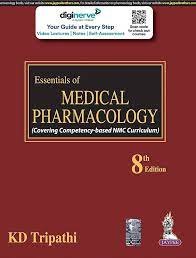
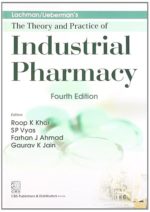
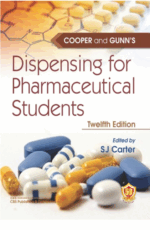
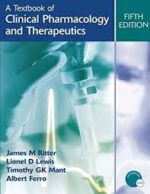
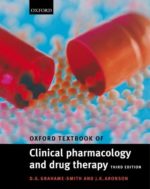
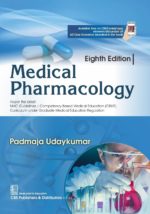
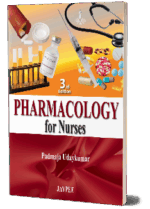
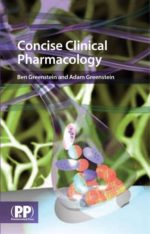

Be the first to review “Essentials of Medical Pharmacology”